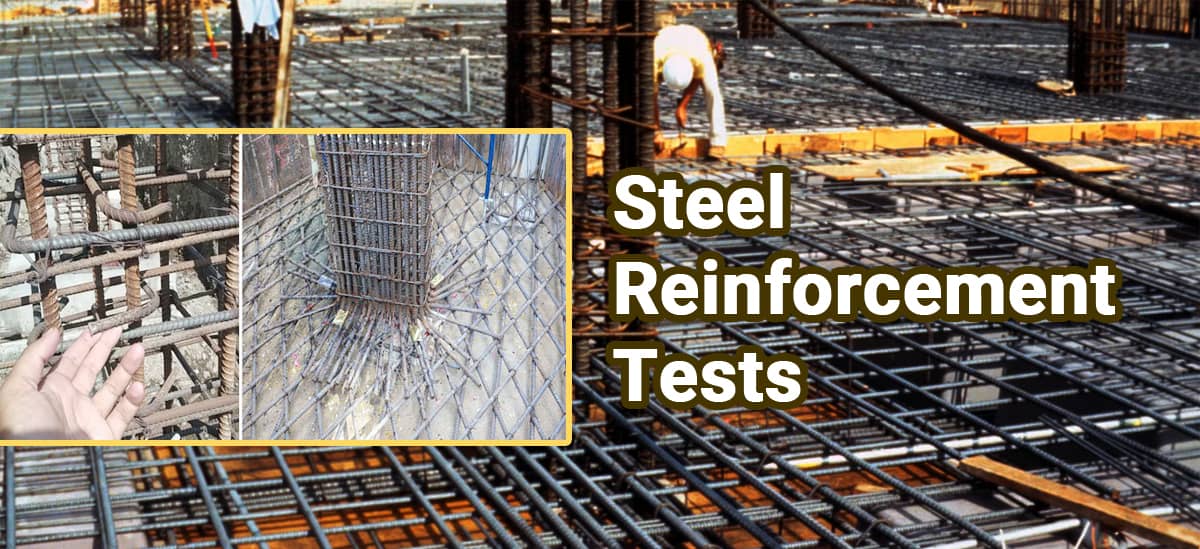Steel Reinforcement Tests

Quality Assurance and Quality Control
The importance of material testing cannot be overstated. It entails estimating the properties and behaviour of things such as metals, ceramics, and plastics under changing conditions. This is why steel reinforcement tests are carried out.
As a result, we obtain data that serves as a foundation for determining the suitability of materials for various purposes. Steel bar reinforcement isn't an exception; it's also put to the test to distinguish between its numerous specified uses.
The tensile test, bending test, and chemical analysis are the most commonly recognised tests for steel bar reinforcement.
Perhaps you don't have much experience with chemical analysis. When an analyst is in charge of any type of item that we use, chemical analysis is used to determine the amount and character of chemical segments in that item. Steel bar reinforcement, basic steel, and adjust or level bar are only a few examples.
Bending Test
A bending test is a low-cost subjective test that is used to determine a material's adaptability and sufficiency.
Bending tests damage a test steel sample halfway through, resulting in a twist structure that does not break. The blockage level of the substance is then determined.
A bending test will almost certainly stack the sample material in a specific form.
Bending tests, especially in early forms, can assist determine whether a material will flip under tension.
The frequency of bending tests must be maintained so that no steel reinforcement with bombed bending test findings can be used and the possibility of a basic issue is avoided.
Tension Test
A material tension test is a destructive method that provides information on the tensile strength, yield strength, and flexibility of the item.
This test is used to determine how the material reacts when power is applied to it.
By drawing the metal, you can usually determine the material's tensile strength, as well as the amount it will lengthen.
One of the primary criteria is to subject a steel bar to stress, which is then smoothed out until dissatisfaction is achieved.
In general, you can determine Young's modulus, Poisson's proportion, and the material's strain-solidifying properties using the tension test.
Yield Strength Test
Yield Strength testing entails pulling a steel test with a controlled steady expanding force until the metal changes shape or breaks, based on the cross-segment territory you chose before.
Yield strength alludes to a test to discover the most extreme stress of a material that will be utilized for a specific item. This test is led to locate the versatile furthest reaches of a specific material without causing plastic distortion.
This test is extremely essential before it is changed over to an item that will be utilized by the general population. In this way, a producer will just pick a material that has adequate yield strength for their items.
At the point when a metallic material shows a yield variation, you arrive at a point during the test at which plastic disfigurement happens without an expansion in the power.
Chemical Analysis
In reality, an analysis is a technique for testing in order to obtain information, facts, and a choice in a certain activity.
Chemical analysis, on the other hand, has a precise meaning in which someone works in a lab to study the chemical substance in a certain item.
From the nuclear scale to the atom scale, a chemical specialist runs a test to examine the chemical content of an example and familiarise themselves with the creation, structures, and material features.
Chemical analysis is usually done to check the chemical substance level in some steel materials used in construction, such as loft, connect, fly over, and so on.
Additionally, there are two types of chemical analysis: quantitative chemical analysis and qualitative chemical analysis.
In essence, quantitative chemical analysis is a method for determining the amount of chemical substance in a sample and determining the degree of chemical substance in the sample.
Meanwhile, qualitative chemical analysis is a method for determining the nature of chemical compounds and the types of chemical substances present in a sample.
For more information Please watch the tutorials
